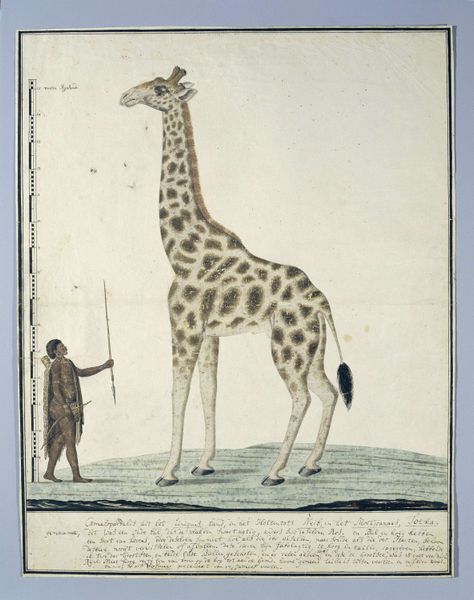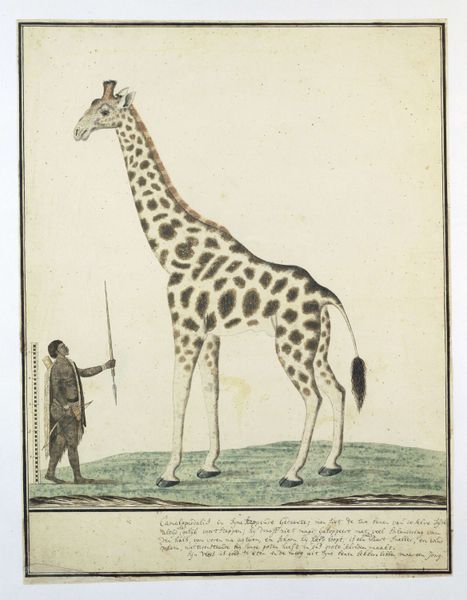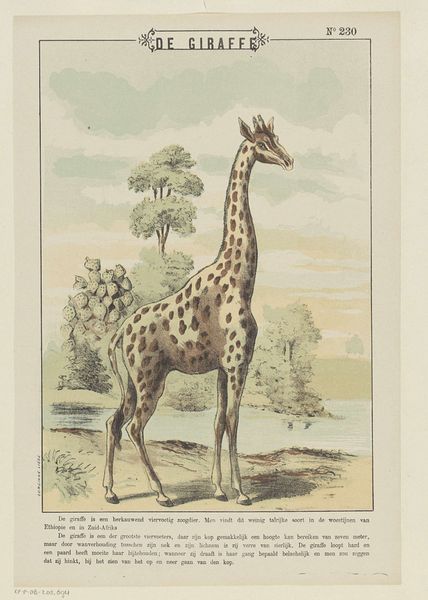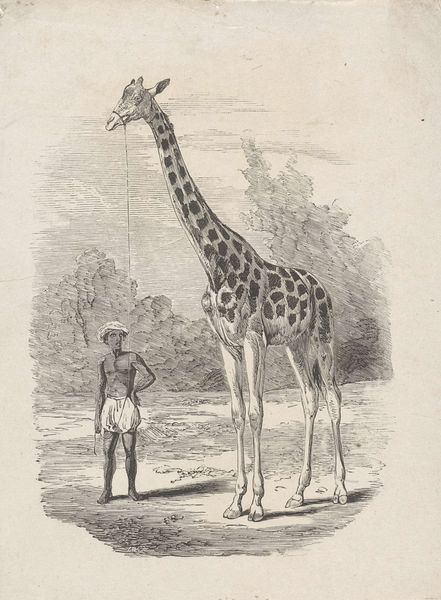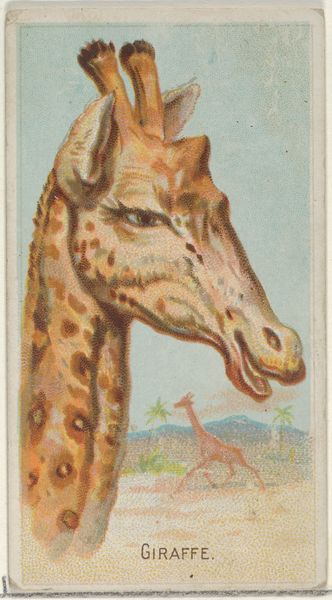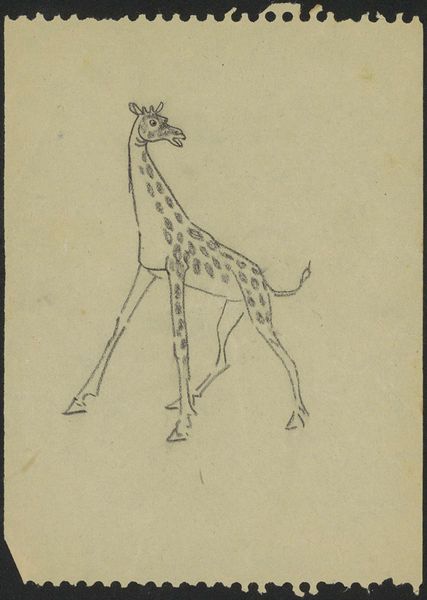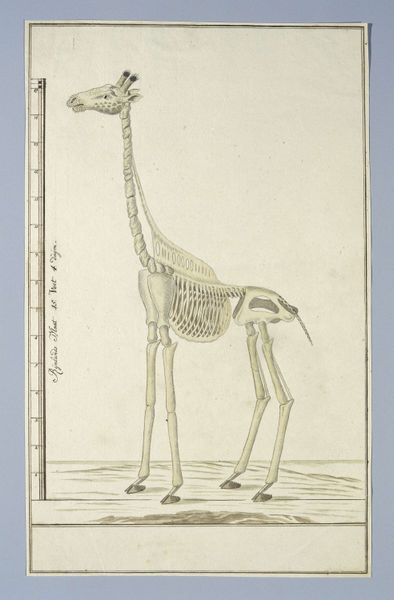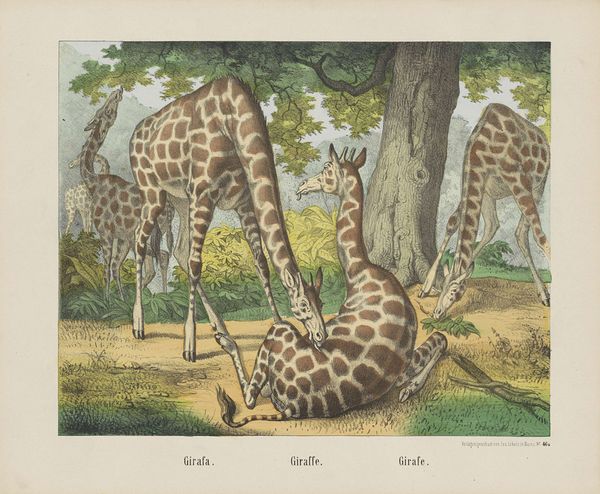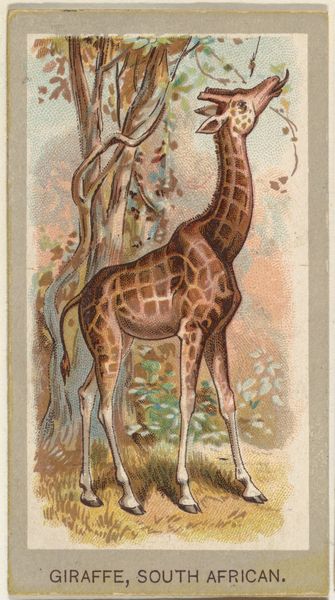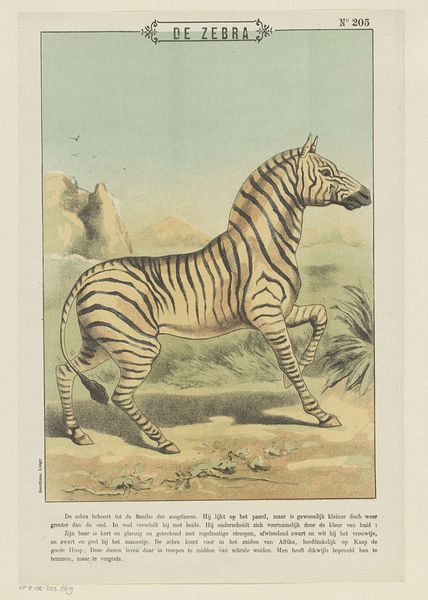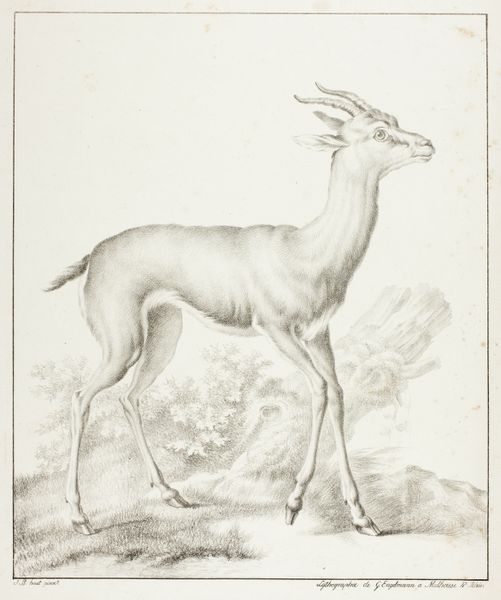
Dimensions: height 660 mm, width 480 mm, height 526 mm, width 368 mm, height 469 mm, width 363 mm
Copyright: Rijks Museum: Open Domain
Curator: What a striking composition. There’s a sense of fragility combined with undeniable grandeur. Editor: Indeed. Today we’re looking at Robert Jacob Gordon's "Giraffa camelopardalis (Giraffe)," a watercolor and pencil drawing from 1779. Gordon was a Dutch military officer and explorer, and this piece comes from his extensive documentation of southern Africa. It's fascinating how the artist presents this encounter between cultures and species. Curator: The use of watercolor lends a softness, almost a dreamlike quality to the animal. Yet, the precision of the lines—especially in the giraffe's patterned coat—demonstrates keen observation. There is an analytical precision which attempts to reflect what some have defined as ‘otherness’. Editor: The inclusion of a human figure, presumably Indigenous, alongside a calibrated scale is very telling. It speaks volumes about colonial practices of measuring, categorizing, and ultimately, controlling the natural world and its inhabitants. What is he even doing there, other than just scaling the animal against a standard metric of size. The scale reads as both science and violent appropriation. Curator: Absolutely. The juxtaposition of the giraffe’s imposing verticality with the human’s smaller scale underscores the power dynamics at play. We see this in many Romantic-era depictions of nature. It reveals how scientific observation was inherently linked to exploration, territorial claims, and even the dehumanization of the Other. Editor: I see the giraffe's pose as elegant; there's a lightness despite its mass. It's interesting how Gordon manages to capture that balance. The palette itself is subtle, drawing out form, texture, and character, from only a handful of colours. Curator: And, speaking of palette, how do we read the seemingly faded washes of the watercolour medium in our current, ecological, moment? Perhaps Gordon unintentionally reflected the temporality and precariousness of existence, both natural and human, within the colonial project. This is not only a work of art, but a historical document that forces a crucial re-thinking of how power, knowledge, and representation have been historically intertwined. Editor: This exploration, through art, reminds me that observation changes that which is being observed. A beautiful, yet complex drawing.
Comments
No comments
Be the first to comment and join the conversation on the ultimate creative platform.
